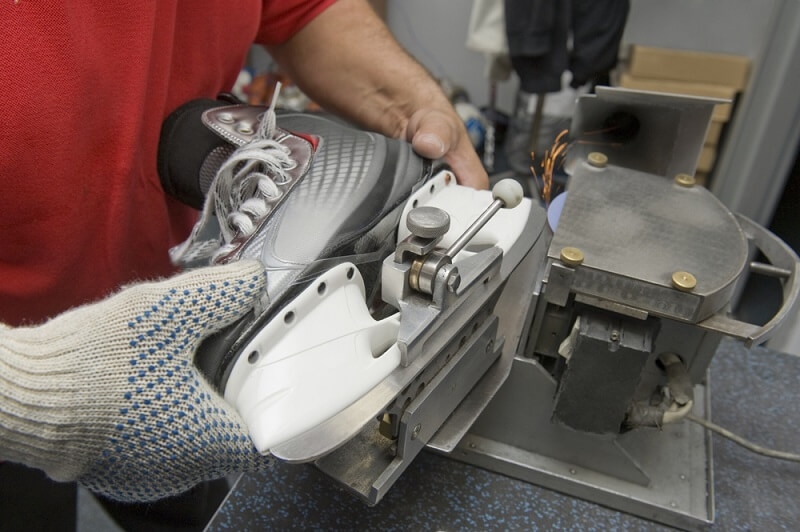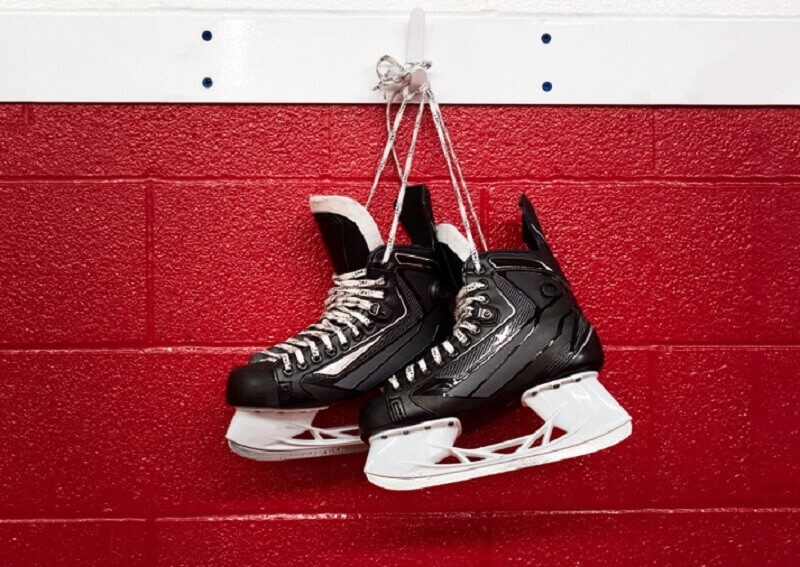
Close
Skate sharpening is an essential ritual for every hockey player, from novices to professionals. It's not just about maintaining the equipment; it's about optimizing performance on the ice. A well-sharpened skate can be the difference between a game-winning move and a missed opportunity. The depth of the hollow, the quality of the sharpening, and the frequency of maintenance all play pivotal roles in how a player maneuvers, accelerates, and stops.
Understanding the nuances of skate sharpening and the factors that influence its effectiveness is crucial for anyone looking to excel in the rink.

Skate sharpening is more than just a routine maintenance task; it's a precise art that directly impacts a player's performance on the ice.
At first glance, a hockey skate blade might seem like a simple, flat piece of metal. However, upon closer inspection, one can observe its unique design. Unlike a knife which has a single edge, a hockey skate blade features an upside-down U shape. This design is intentional, serving specific functions during gameplay.
Central to the blade's design is the hollowa rounded, hollow space in the middle of the blade. This hollow creates two distinct edges, a left and a right, which interact with the ice in different ways. The depth of this hollow determines the balance between glide and bite, allowing players to customize their skates based on their preferences and playing style. A deeper hollow offers more grip or "bite" on the ice, while a shallower one provides more glide. Understanding and choosing the right hollow is essential for maximizing on-ice performance.
Every skater faces a critical decision when sharpening their skates: the tradeoff between glide and bite.
Glide, often mastered by some of the greatest hockey players of all time, refers to the effortless movement across the ice, allowing players to achieve higher speeds with less resistance. Bite, on the other hand, provides players with the grip they need to execute sharp turns, stops, and agile maneuvers. Striking the right balance between these two is essential for optimal performance, as it determines how a player interacts with the ice surface.
The depth of the hollow in a skate blade is the primary factor that dictates this balance. A deeper hollow provides more bite, making the skates feel grippier. In contrast, a shallower hollow offers more glide, allowing for smoother and faster skating.
The world of skate sharpening is vast, with various hollow measurements catering to different needs and preferences.
Hollow measurements range from deep to shallow, with common sizes like 1/2", 5/8", and 3/4". Each measurement offers a unique skating experience. For instance, a 1/2" hollow will provide more bite than a 3/4" hollow, making it suitable for players who prioritize control over speed.
Lighter players often opt for deeper hollows to achieve the necessary grip on the ice, while heavier players might prefer shallower hollows to benefit from better glide. Strength also plays a role; stronger players can leverage the bite from shallower hollows effectively.

The condition of a player's skate blades can make or break their game, emphasizing the significance of regular and precise sharpening.
Sharp blades offer numerous benefits, including quicker acceleration, enhanced agility, and a smoother glide. They also ensure maximum blade contact with the ice, leading to improved balance and stability.
Dull blades can hinder a player's ability to accelerate quickly, make sharp turns, or stop on a dime. In contrast, sharp blades allow players to harness their full potential, ensuring that their skills, rather than their equipment, determine their performance on the ice.
The frequency and timing of skate sharpening can significantly influence a player's performance on the ice. While there's no one-size-fits-all answer, understanding the signs of wear and general recommendations can guide players to make informed decisions.
Dull blades can drastically affect a player's agility, speed, and control. One of the most evident signs of a dull blade is reduced grip on the ice, leading to slips and decreased maneuverability. Upon close inspection, dull blades may have visible nicks, scratches, or a flattened surface, especially along the edges. Additionally, if a player feels they're exerting more effort for less on-ice output, it might be time to check the blades.
The ideal sharpening frequency varies based on the player's activity level, ice conditions, and personal preference. Competitive players seeking optimal performance might consider sharpening their skates after every 2 to 3 hours of ice time. However, recreational players can extend this interval, sharpening after 10 hours of ice time or when they notice performance dips.
The world of skate sharpening has evolved, offering players multiple methods to achieve that perfect edge.
Traditional skate sharpening involves a technician manually passing the blades over a spinning stone, and adjusting the stone's curve to achieve the desired hollow. This method requires a skilled technician to ensure consistency and precision. In contrast, automated sharpening systems, like PROSHARP, offer a more standardized approach. These machines maintain consistent pressure and pace, ensuring uniform sharpening every time.
Manual sharpening allows for a personalized touch, and experienced technicians can cater to specific player needs. However, it's susceptible to human error, which can lead to inconsistencies. Automated sharpening, on the other hand, offers precision and consistency, ensuring the same blade height and maintaining the blade's profile. The drawback is that it might not capture the nuanced preferences of seasoned players who have specific sharpening needs. Regardless of the method, the goal remains the same: a sharp blade for optimal performance.
The environment in which a player skates plays a pivotal role in determining skate performance.
Rink temperature directly affects the ice's hardness or softness. On colder ice, skates tend to stay atop the surface, making it harder to dig in, which can affect grip and maneuverability. Conversely, warmer, softer ice allows for deeper penetration by the skate blade, increasing resistance and potentially causing more fatigue.
Skaters often adjust their sharpening preferences based on these conditions. For instance, on harder ice, a deeper hollow might be preferred to achieve better grip, while on softer ice, a shallower hollow could be beneficial to reduce drag.
As skate sharpening evolves, mirroring the evolution of hockey, so do the techniques to achieve the perfect edge.
FBV sharpening is an innovative method that combines the benefits of both flat and traditional hollow sharpening. It offers a flat center for glide and angled sides for bite, aiming to provide the best of both worlds.
While traditional hollows offer a consistent curve, FBV provides a unique shape aiming to optimize speed and agility. The choice between the two often boils down to personal preference and playing style.
Maintaining skates between sharpenings is crucial for prolonged performance.
Honing stones can smooth out minor nicks and imperfections on the blade, while re-edging tools help maintain the blade's edges, ensuring consistent performance.
Regular blade care not only prolongs the life of the skates but also ensures that players can perform at their best every time they hit the ice. Proper maintenance reduces the risk of unexpected performance drops and potential injuries.
You may also like: A Beginner's Guide: Rules for Indoor Field Hockey
In the dynamic world of hockey, understanding skate sharpening is paramount. From recognizing the signs of wear to mastering advanced techniques, players can optimize their performance on the ice. Regular maintenance and adapting to environmental factors further enhance one's game. Ultimately, well-maintained skates are the foundation of every great player's success.
This content was created by AI